Most cats get stuck because they panic, but the right moves can bring them down fast.
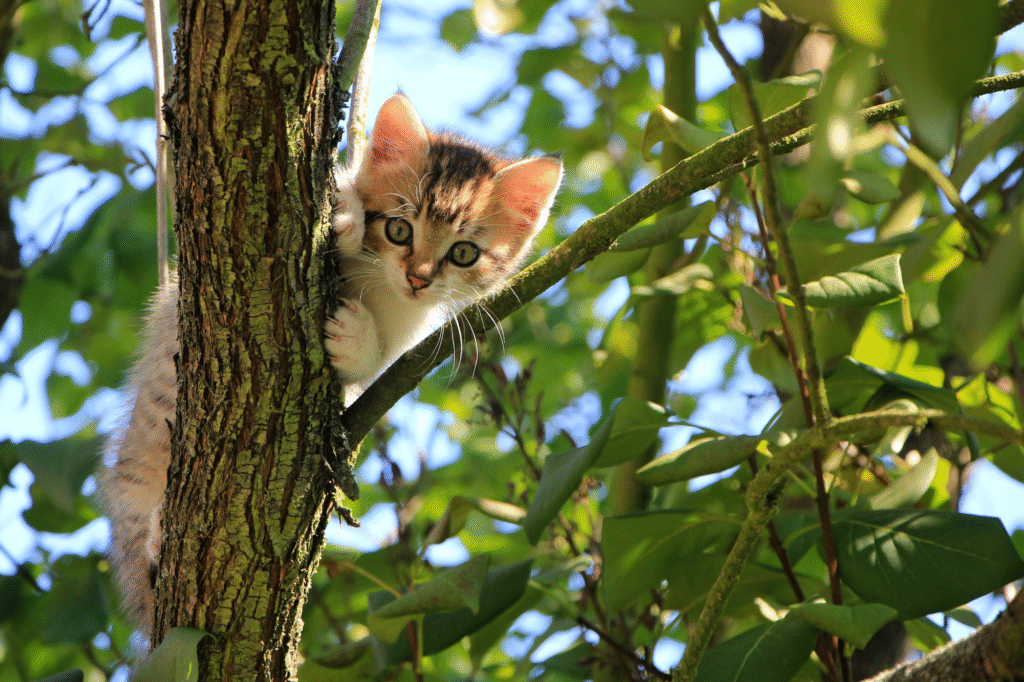
Cats look majestic climbing up trees, but getting them back down is often a whole different story. Panic sets in, humans freak out, and suddenly it’s an unplanned rescue mission. The good news is you don’t have to call the fire department or scale the tree like a superhero. There are tried and true ways to get your feline safely down while keeping everyone’s nerves intact and their claws off your face.
1) Tempt them with a food they can’t refuse.

According to the Humane Society, food is often the quickest motivator to lure cats down from heights. Warming up something especially aromatic like tuna or even chicken can break through their fear and engage their hunter instinct. Place the food at the base of the tree and step back to give them space. Hunger usually outweighs panic, and watching them make their way down for the reward can be surprisingly quick once they realize it’s safe.
2) Use a calm voice to lower their anxiety.
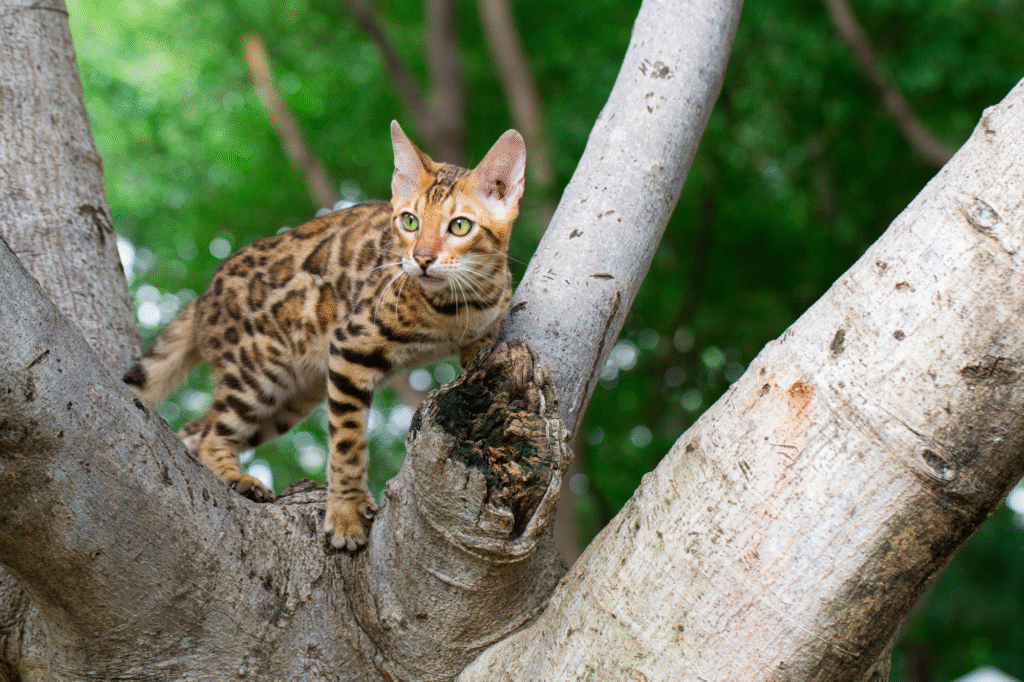
As stated by the American Veterinary Medical Association, cats respond to human tone and stress levels more than people think. Speaking softly and using familiar phrases can reduce their panic enough to consider climbing down. Avoid shouting, clapping, or rushing up the tree because sudden noises can push them higher. Sometimes, just sitting quietly nearby and calling their name in a reassuring tone helps them focus and find the courage to come down on their own.
3) Create a safe way down with something sturdy.

Reported by PetMD, using a sturdy ladder or long board to create a gradual path down can give nervous cats a confidence boost. Positioning it at an angle against the tree lets them step down instead of leaping blindly. It’s important to ensure it’s secure so it doesn’t shift or scare them further. Many cats take one cautious step at a time and realize quickly they can reach the ground safely, especially when there’s no sense of freefall.
4) Offer a familiar object at the bottom.
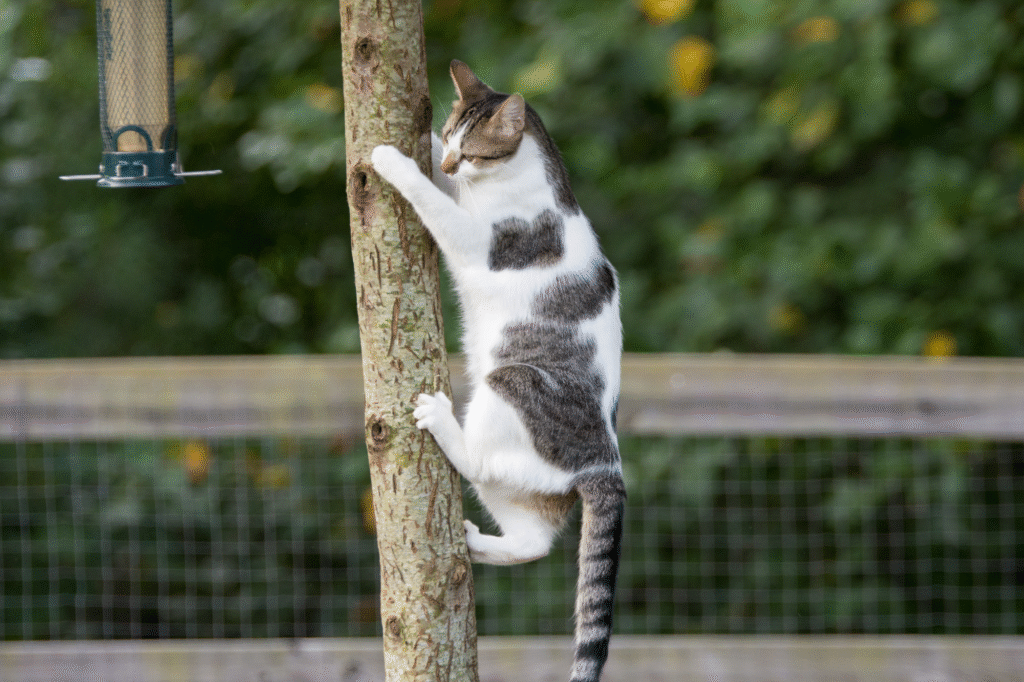
Placing a favorite blanket or their usual bed at the base of the tree provides a sense of home and comfort. Familiar smells work like a calming signal, letting them know this is safe territory. Cats often associate certain textures and scents with security, and it can shift their mindset from panic to curiosity. The goal is to remove as much fear as possible, and those little familiar cues can make a surprising difference.
5) Use gravity in your favor and wait.
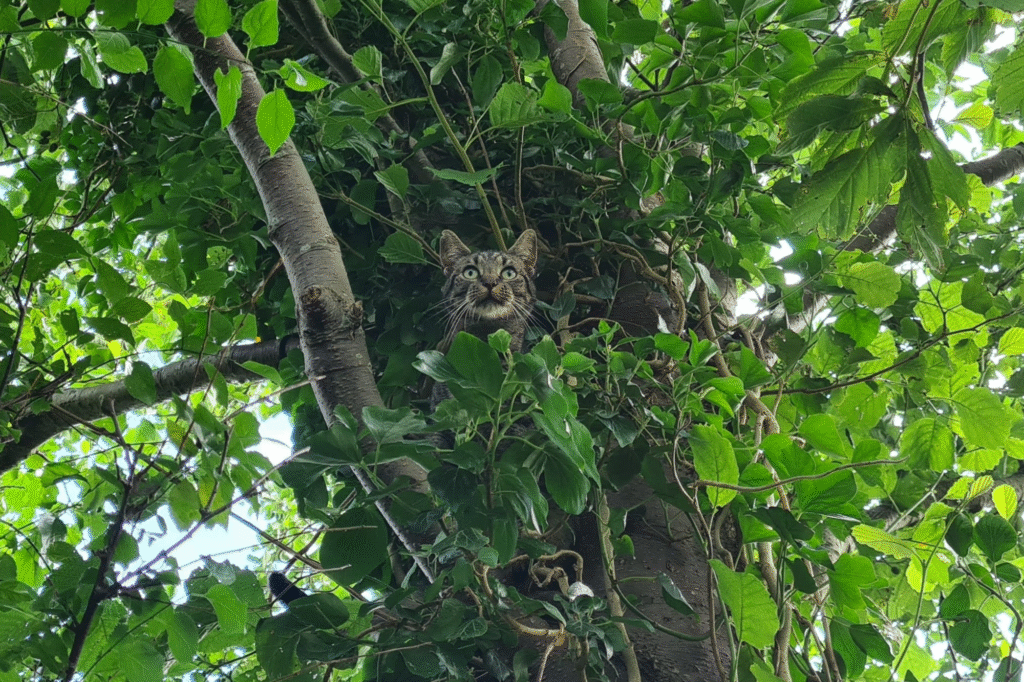
Cats are more likely to come down once their initial adrenaline wears off. Waiting nearby quietly, with no sudden movements or loud noises, lets them reassess the situation. Often after an hour or so, they calm enough to climb down on their own. It’s hard for people to do nothing, but sometimes the safest solution is to trust their natural ability to handle heights—especially when you’ve removed distractions that might spook them further.
6) Call in a professional if nothing changes.
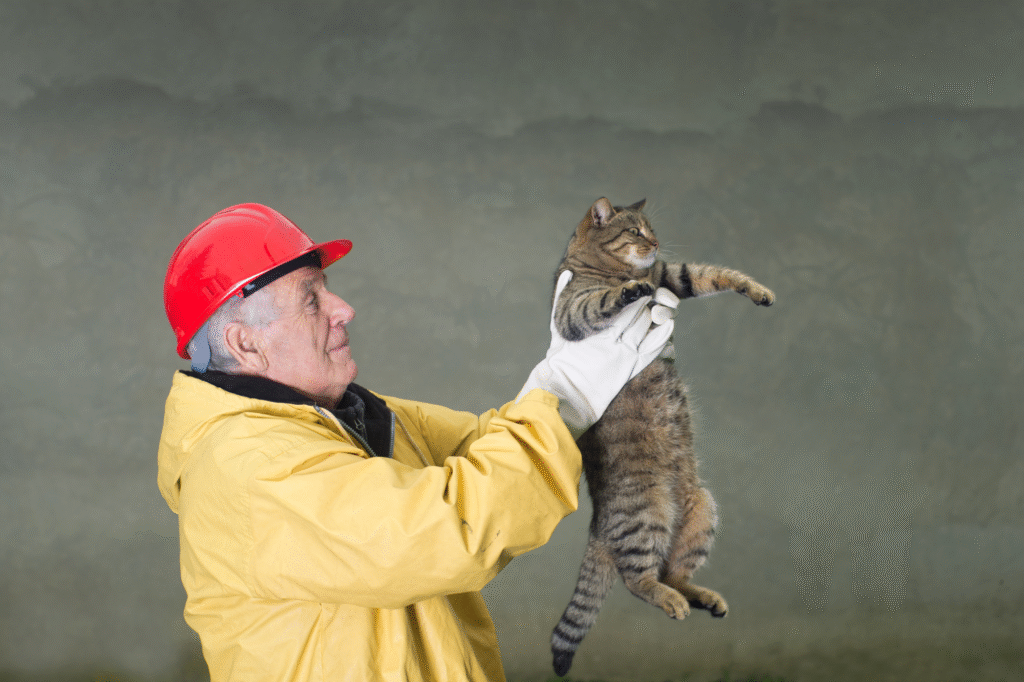
When hours pass and the cat refuses to move, calling a tree service or animal rescue team can save time and stress. Professionals have the right safety equipment and experience to manage risky climbs without hurting the cat or themselves. Some even specialize in pet rescues and can be on site quickly. While it might feel dramatic, this is often safer than trying to scale a tree unprepared, which can lead to injury.
7) Block off the area once they’re down.

Once your cat’s back on the ground, prevent repeat performances by limiting access to that tree or nearby ones they might climb. Placing deterrents or trimming branches they can reach helps reduce temptation. Cats often get stuck multiple times if there’s easy access to high spots, so taking a little time to modify the area pays off. It’s a long-term fix that saves everyone the stress of dealing with repeat rescues.
8) Reinforce ground-level confidence for the future.

Building up your cat’s comfort on ground-level structures like climbing posts or shelves can reduce tree-climbing escapades. Encouraging them to use safe indoor climbing areas channels that instinct without risking another outdoor crisis. Rewarding them for using these spaces with treats or praise builds new habits. Cats often repeat behaviors they find rewarding, and creating a satisfying alternative keeps the outdoor trees for birds while your cat stays safe and stress-free.
